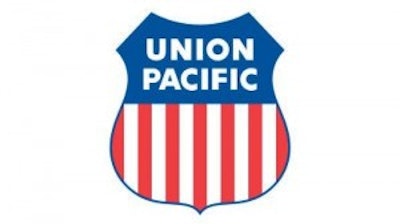Investors often have a set of metrics that they use to analyze and value each company they investigate. Each of these metrics can be useful, but it is dangerous to apply one set of analytical tools to all companies. Instead, investors should customize the set of metrics used to evaluate potential investments on a company-by-company basis.
For instance, investors who are interested in investing in a bank are not going to put much emphasis on its price-to-earnings ratio or operating margin. Instead, investors should focus on a bank’s return on equity and price-to-book (or price-to-tangible book) because those metrics are more relevant to the analysis.

Sometimes, investors may need to create their own metrics to evaluate a company. For instance, EBITDA per room may be usefulwhen comparing one hotel’s profitability to another. However, plain vanilla metrics usually work just fine.
Key to railroad analysis: return on assets
Since railroads are capital intensive, it is extremely important that the firms utilize their assets in the most efficient manner possible. Return on assets — net income divided by total assets — is a simple way of measuring how efficiently a railroad uses its assets.
Union Pacific Corporation (NYSE:UNP) is an example of a railroad that has started to utilize its assets more efficiently as of late. The rising price of oil has boosted rail traffic industry-wide, but Union Pacific has magnified the effect by making significant improvements to its cost structure. As a result, the company raised its return on assets from 4.5% in 2009 to 8.4% in 2012 — an enormous improvement that makes it one of the most efficient operators in the industry.
What’s more, the frothy state of the railroad industry is allowing the company to re-up expiring long-term contracts on favorable terms; return on assets may yet improve even more as a result.
Kansas City Southern (NYSE:KSU) is on the other end of the spectrum from Union Pacific Corporation (NYSE:UNP). Having grown assets at about the same rate as sales over the last decade, the railroad has struggled to improve its dismal return on assets (it earns a low- to mid-single digit ROA).
But Kansas City Southern can improve its return on assets if it can increase traffic on its track. Instead of relying on its own cars to earn the bulk of its profits, the firm offers concessions to other railroads so that it can utilize all of its capacity. This should, in theory, lead to above-average return on assets, but management has yet to achieve this feat.
Finally, Norfolk Southern Corp. (NYSE:NSC) has managed a respectable 6% return on assets over the last decade. Like Kansas City Southern, Norfolk Southern utilizes a business model that should provide an above-average return on assets. Instead of concessions, though, Norfolk Southern has invested heavily in its intermodal segment, which has historically earned outsized returns on invested capital. As a result, Norfolk Southern is one of the best-performing railroads.
Union Pacific Corporation (NYSE:UNP) and Norfolk Southern are able to earn high returns because of the nature of the industry. Railroads operate only where they own track or have the right to operate on a given track; this has led to monopolies or near-monopolies in most markets. As a results, multiple railroads can thrive at the same time.
However, although Norfolk Southern is a high-performing business, Union Pacific’s return on assets is higher and will likely improve even more in the years ahead. In addition to having a relatively large number of contracts up for renewal during a favorable pricing environment, Union Pacific has a lower exposure to coal than Norfolk Southern. Coal is under pressure from low natural gas prices and environmental regulations, which will likely depress coal shipments even further in the years ahead.
To top it off, Union Pacific Corporation (NYSE:UNP) maintains a healthier balance sheet than Norfolk Southern, which will allow it to return more capital to shareholders instead of having to pay down debt. As a result of these factors, Union Pacific Corporation (NYSE:UNP) is a better railroad than Norfolk Southern in its operations and its capital allocation.
Bottom line
Investors should always tailor their analysis based on what is most relevant to each individual company they investigate. In the railroad industry, return on assets tells us more about how well-run a business is than any other metric. Therefore, investors should focus on paying a given multiple of assets based on a company’s return on assets. Of course, the bull market and railroad boom has inflated railroad stock prices to unattractive multiples of assets, so long-term investors should patiently wait for prices to come back down to a bargain level.
Ted Cooper has no position in any stocks mentioned. The Motley Fool has no position in any of the stocks mentioned.
The article This Railroad Stands Out from the Others originally appeared on Fool.com.
Copyright © 1995 – 2013 The Motley Fool, LLC. All rights reserved. The Motley Fool has a disclosure policy.


